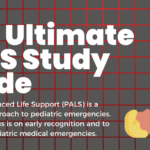One of the most important CPR statistics in 2015 is that 4 out of 5 cardiac emergencies happen at home. That’s why it’s so important to stay up to date on the latest CPR techniques.
The American Heart Association (AHA) updates its CPR guidelines every 5 years. So if you haven’t updated your CPR certification since 2005, you have a lot to learn. Here’s what has changed in the past 10 years.
Don’t give up! In the past, CPR was considered useless after a certain point. However, CPR statistics in 2015 have shown that people can recover after long periods of CPR. The new recommendation is to keep delivering chest compressions until professional help arrives.
- Start with Compressions. The old method instructed laypersons giving CPR to use the ABCs: to clear the victim’s airway first, then apply rescue breaths and deliver chest compressions. Now, the current method teaches the rescuers to use the CAB method: apply chest Compressions first, then clear the Aairway and give Breaths.
- Forget the pulse. AHA now recommends that non-medical professionals skip finding the pulse and focus on the chest compressions and breaths, as this increases the victim’s chances of survival.
- Change your breath-to-compressions ratio. A decade ago, CPR classes taught rescuers to provide two breaths for every 15 compressions. The new guidelines recommend two breaths for every 30 compressions.
- Compress harder and faster. Instead of pushing 1.5 to 2 inches into the chest, the AHA now wants you to push at least two inches. Instead of delivering about 100 compressions per minute, deliver at least 100 compressions per minute, if not more.
Another CPR statistic in 2015 is that instructors used to teach “look, listen, and feel” before calling for help. Now they want you call 911 as soon as you realize there’s a problem; then start CPR right away.











